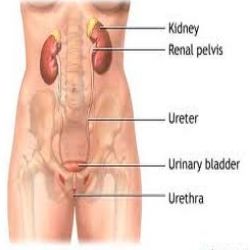
Painful bladder syndrome (PBS) is an interstitial disease that causes considerable pressure within the urinary bladder. It can even cause pelvic discomfort. The condition usually affects women and can severely affect your overall quality of life. Fortunately, it can be easily treated with natural remedies, which are designed to address the underlying causes of the disease and restore your body to optimal health.
Although this is a very uncomfortable state, you should never be ashamed or embarrassed to talk about it. If you suspect you may have a problem, see your doctor or nurse practitioner for the correct diagnosis. Your doctor will likely do a test to determine if your symptoms are caused by an infection or tumor. Other tests may include x-rays, abdominal ultrasounds, or endoscopy to determine the exact location and nature of the problem. If necessary, a course of antibiotics can be prescribed.
Common causes of the condition include pelvic inflammatory disease (PID), tumors, endometriosis, or a bacterial infection called pyelonephritis. If an infection occurs, your doctor may prescribe antibiotics and other medications. In the case of a tumor, in some cases, surgery may be recommended. Endometriosis may require estrogen or hormone therapy.
As mentioned, pelvic pressure can be caused by bladder spasms and urinary retention. To fix the root cause of the problem, you need to learn how to deal with the symptoms and treat the root cause.
Natural and herbal remedies can be used to relieve symptoms and control general discomfort. Aloe vera is especially effective in soothing the stomach and relieving painful bladder symptoms. Plus, using herbal teas like ginger, chamomile, valerian, and rosemary can help relieve urinary tract discomfort.
If your pain is caused by endometriosis, natural remedies can be especially helpful. These remedies can also help relieve pelvic pain.
To learn more about these natural remedies and how to get rid of painful bladder syndrome, contact a qualified practitioner
You can find many such practitioners online and in your local library.
These remedies and lifestyle changes can help you cope with painful syndrome and regain control over your bladder and bowel movements. Once you understand the cause of the condition, you can take steps to address it properly.
Lifestyle changes include eating well, staying away from stress, and getting enough exercise. Also, quitting smoking, drinking too much alcohol, and not doing drugs can help to lessen or eliminate your symptoms. Taking a relaxing bath or shower twice each day, exercising on a regular basis, and avoiding heavy foods and caffeine will help with your bladder problems as well.
Pain relief is possible through the use of warm compresses and hot compress. When a warm compress is applied, you will feel immediate relief from the pain and stress that are causing your discomfort. Cold compresses should be avoided at all costs.
If the pain is due to an infection, you can purchase over-the-counter medicines and medications, like acetaminophen or ibuprofen, that will provide pain relief. Over-the-counter medications may also be prescribed by your physician to relieve the irritation that is causing your symptoms.
These medicines can relieve the irritation caused by your bladder spasms and will help to control the pain associated with it. You should avoid any type of surgery unless it is absolutely necessary.
If the pain is due to an infection, then herbal remedies are probably more effective. Using supplements to detoxify your system or using herbs that help to relax the urinary tract will help to relieve pain.
Pustule, an inflated, circumscribed raised portion of the epidermis, filled with inflamed, necrotic, inflammatory tissues. Pustules may be filled with either pus or fluid. Pustules are usually infected and show a red inflamed and crusty surface. The most common pustuloids are the blackheads of those with acne. However, the pustuloid may also appear in a different form like a nodule or a cyst.
Acne is a chronic and widespread condition which is characterized by the presence of whiteheads, blackheads and pustulosis. Acne occurs due to several factors like, hormonal changes, genetic predisposition, stress and many more. Pustular acne occurs when the sebaceous gland becomes overactive causing inflammation and swelling of the hair follicles. The inflammation leads to a release of sebum which may then drain into the pore, thus resulting in a discharge of pus or a liquid resembling blood. Pustula can occur on the face and on the back of neck, chest and sometimes it can even occur in the abdominal area.
As it may be difficult to diagnose acne, there are several ways of treating the pustule. First of all, the pustule can be removed using an antibacterial solution. Some of the common treatment options include, washing the affected area with warm saltwater. If the inflammation is very severe and if you want to remove the pustule completely, you should see your dermatologist.
If you want to prevent the pustule from spreading to other parts of the body, you should keep your skin moist at all times. The use of a mild soap and water will do wonders in this regard. When you feel the first signs of pus appearing on the skin, you should take immediate action. The first thing to do is wash the area with warm water as this will help in draining away the pus. Never use any chemical agent for the purpose of cleaning the affected area. You must avoid the use of any kind of cleansers as they will aggravate the situation. Instead, use a cotton pad to gently clean the affected area.
There are a number of acne treatments available on the market. Most of them work well to get rid of acne but some may not be effective if the pustule is infected. They may leave a greasy feeling after application. To get rid of this problem, you can take the help of an antiseptic cream that contains benzoyl peroxide. In severe cases, antibiotics are used to kill bacteria and clear away pus.
In some cases, the acne treatments like antibiotics, benzoyl peroxide and laser treatment are required. They are best suited for mild pustulosis. If your pustular acne is so severe, you should consult your dermatologist. Some of them include, photocoagulation, dermabrasion.

Leave a Reply